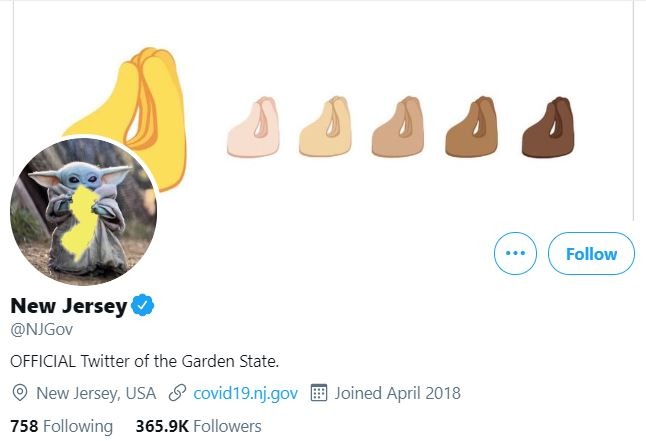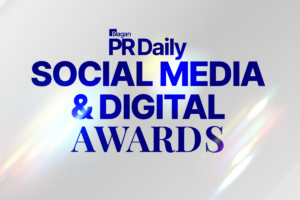Calculated risk: Social media strategy in 2021
Kivvit’s Pearl Gabel, social media veteran behind New Jersey’s viral entrée into Twitter, shares her thoughts on what will work in the months ahead.

It’s been said annually the past several years: Social media and digital content is more important than ever before. And year after year, it’s a statement that rings true.
Now, after almost a full year of COVID-19, remote work, social disruption and digital transformation, that digital infrastructure is once again more important than ever before. It will likely be even more important next year—such is the nature of trends and transformation.
“As the pandemic continues into 2021, and we remain socially isolated, digital communications is a lifeline,” says Pearl Gabel, director of brand strategy and digital integration for Kivvit. “When social platforms are at their best, they create community and dialogue, amplify marginalized voices, and bring us closer together.” Gabel joins Kivvit after working as the digital director for New Jersey’s Gov. Phil Murphy since 2018.

Pearl Gabel
Even for diehard fans of the written word, more and more of their information diet comes from the smaller screen.
“I still consume print news, magazines and television,” Gabel says, “but the majority of my information consumption is from my computer and smartphone. And that trend continues to increase.”
Provocation as a tool
As the internet fills up with competing channels of content, the incentives are growing for provocateurs to push the envelope to stand out from the crowd. It’s part of the recipe that was behind Gabel’s work on the State of New Jersey’s Twitter account that tweeted mom jokes and other quips in 2019.
Gabel explains the need to take risks this way:
Browse the feed on any one of your social platforms. The sheer amount of information directed at you is staggering. You can’t possibly watch every video or read every article. So, what grabs you? How can a voice break through this influx of words and media and cause you to: Stop. Click. Look.
She says that being provocative isn’t an active choice. She strives for “engaging” and “bold,” which can be provocative.
“To inform, we need to engage,” she says. “And engaging requires us to cut through the noise with content that is clear, concise, emotional, real, interesting, different or unexpected. If a state government can do that (or fast-food chain, etc.), so can your organization and your industry.”
Assessing risks
For brands that are overly cautious, particularly online, the lost opportunities can stack up. That’s particularly true in an era where consumers expect brand managers to take a stand on issues that matter to them like racial justice and climate conservation.
“Today, the greatest risk is not taking risks,” says Gabel. “Don’t bury the lede. If the crux of what you want to say is ‘Black Lives Matter,’ then don’t bury that in drawn out sentences or flowery rhetoric. Just say it.”
Social media and digital assets also need a prominent seat at the table as their impact on brand reputation has grown.\
“Social media, design, web, video are the public faces of your organization, and their prominence within your organization need to reflect that,” Gabel says.
Focus on community
Successful social media in 2021 won’t offer one-way communication that drips marketing messages into the feeds of exhausted audiences. According to Gabel, people are looking for empathy and human connection.
“A generous social media presence that creates community and empowers others is essential,” she says. “It’s not about ‘I’; it’s about ‘us.’”
That will require PR pros to work carefully with customer service teams to provide an excellent consumer experience and engage, engage, engage.
“The audience in 2021 is smart and savvy,” Gabel says. “Many have been on social media for over a decade. They can smell bullsh**, and they will scroll right by it.”
Virality in the age of COVID
Despite Gabel’s success on campaigns like her work on New Jersey’s Twitter account where tweets went viral, she sticks to the mantra of many social media pros in these unpredictable times: strategy is what matters.
In revisiting her work, she points out how a campaign builds to success. “The spontaneousness of [the viral success] was not a fluke,” she says. “It was built up and baked into the social media strategy. Getting to that point took time, trust-building, and strategic thinking.”
She breaks down the steps that helped lay the foundation:
- Build the infrastructure. (For the New Jersey campaign, creating social channels for the State of New Jersey, the governor, etc.)
- Build trust and relationships with the entire team.
- Brainstorm strategy. (For @NJGOV, that was what it means to be “New Jersey,” how it’s been done before, and how to take it to the limit).
- Only then was the account able to begin “to take risks with content.”
Rules to live by in 2021
Gabel has a few lessons she is taking from the extraordinary events of 2020 to help guide her work in the new year. She says that creative pros and communicators have never had more influence in the organization—and it’s up to them to use it.
Here are her lessons for communicators this year:
- There are no dumb ideas—lay it all on the table.
- The risk is not taking a risk.
- Take a full body, full emotion approach to each campaign/branding opportunity.
- Don’t be afraid to take chances and be the first in your industry to try something new.
- Trust creatives.
- Engage and empower your audience.
- Have fun.
Looking for more tips and insights for your social media strategy? Check out our Social Media and Digital Communications Conference March 16.







